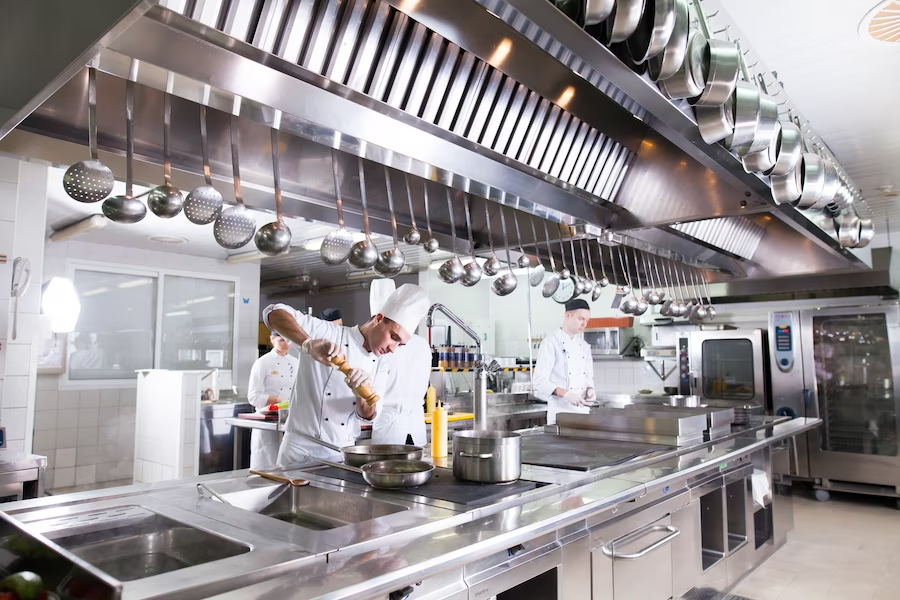In recent years, the culinary landscape has witnessed a remarkable evolution, driven by the changing dynamics of the food industry.
One of the most intriguing developments has been the emergence of shared commercial kitchen spaces, redefining how culinary entrepreneurs operate and innovate. Breaking traditional barriers, these communal kitchens have become the epicenter of a culinary revolution, fostering collaboration, creativity, and inclusivity.
In this article, we delve into the genesis of shared commercial kitchen, explore the benefits they bring to the table, and contemplate the future they hold for the food industry.
The Genesis of Shared Kitchens
The rise of shared commercial kitchens can be attributed to the confluence of several factors. First and foremost is the explosive growth of the food delivery and catering industry.
With the surge in demand for diverse cuisines delivered to your doorstep, chefs, and foodpreneurs found themselves grappling with the high costs and logistical challenges of establishing their own fully equipped commercial kitchens.
Shared kitchen spaces emerged as a solution to this dilemma, providing a cost-effective and efficient way for culinary entrepreneurs to access state-of-the-art facilities without the burdensome overhead costs.
These spaces are equipped with cutting-edge appliances, storage solutions, and meeting areas, allowing chefs to focus on their craft rather than the administrative headaches of managing a full-scale kitchen.
Fostering Collaboration and Innovation
One of the key benefits of shared commercial kitchens is the collaborative environment they foster. Traditionally, chefs and culinary professionals work in isolation, guarding their recipes and techniques as closely held secrets.
However, shared kitchen spaces break down these barriers, creating an atmosphere of openness and collaboration.
In these communal kitchens, chefs from diverse culinary backgrounds come together, sharing ideas, techniques, and even ingredients. This cross-pollination of ideas leads to the creation of innovative and fusion cuisines that reflect a global culinary tapestry. Whether it’s a sushi chef experimenting with Mexican flavors or a pastry chef incorporating traditional spices from India, the shared kitchen environment becomes a melting pot of culinary creativity.
Furthermore, the collaborative nature of shared kitchens extends beyond individual chefs. Many shared kitchen spaces host events, workshops, and tastings, providing a platform for chefs to showcase their creations to a wider audience.
This not only helps in building a sense of community but also serves as a launching pad for culinary entrepreneurs to test their concepts and gather valuable feedback.
Breaking Down Barriers to Entry
The food industry has historically been known for its high barriers to entry. Establishing and operating a commercial kitchen involves significant upfront costs, from procuring equipment to securing licenses and permits.
For many aspiring chefs and foodpreneurs, these barriers acted as deterrents, limiting the diversity and dynamism of the culinary landscape.
Shared commercial kitchens democratize the culinary world by breaking down these barriers. Entrepreneurs with innovative ideas but limited financial resources can now access fully equipped kitchens at a fraction of the cost of setting up their own.
This democratization has led to a surge in culinary entrepreneurship, empowering chefs from all walks of life to bring their unique flavors to the table.
Inclusivity and Diversity
Beyond collaboration and cost-effectiveness, shared commercial kitchens play a crucial role in promoting inclusivity and diversity in the culinary world.
Traditionally, the industry has been dominated by a select few, with access to resources often determined by factors such as gender, ethnicity, or socio-economic status.
Shared kitchens challenge these norms by providing an equal playing field for all culinary enthusiasts. Whether you’re a seasoned chef looking to experiment with a new concept or an amateur cook with a passion for sharing your cultural cuisine, these spaces welcome everyone.
This inclusivity not only enriches the culinary landscape but also contributes to a more vibrant and representative food industry.
The Future of Shared Commercial Kitchens
As the popularity of shared commercial kitchens continues to rise, it’s clear that they are not just a passing trend but a transformative force in the food industry. The future holds even more exciting possibilities for these communal spaces.
Firstly, technology plays a significant role in optimizing shared kitchen operations. From advanced inventory management systems to smart appliances, technology is streamlining the cooking process, making it more efficient and cost-effective for chefs.
Secondly, shared kitchens are expanding beyond urban centers, reaching suburban and even rural areas. This decentralization allows chefs to tap into local ingredients and flavors, promoting sustainability and strengthening ties with the community.
Conclusion
In conclusion, the rise of shared commercial kitchen spaces marks a pivotal moment in the evolution of the food industry. Beyond the practical advantages of cost-sharing and efficiency, these communal kitchens are transforming the culinary landscape by fostering collaboration, breaking down barriers to entry, and promoting inclusivity.
As chefs from diverse backgrounds come together to share their passion and creativity, the future of the food industry looks brighter, more diverse, and more flavorful than ever before.
